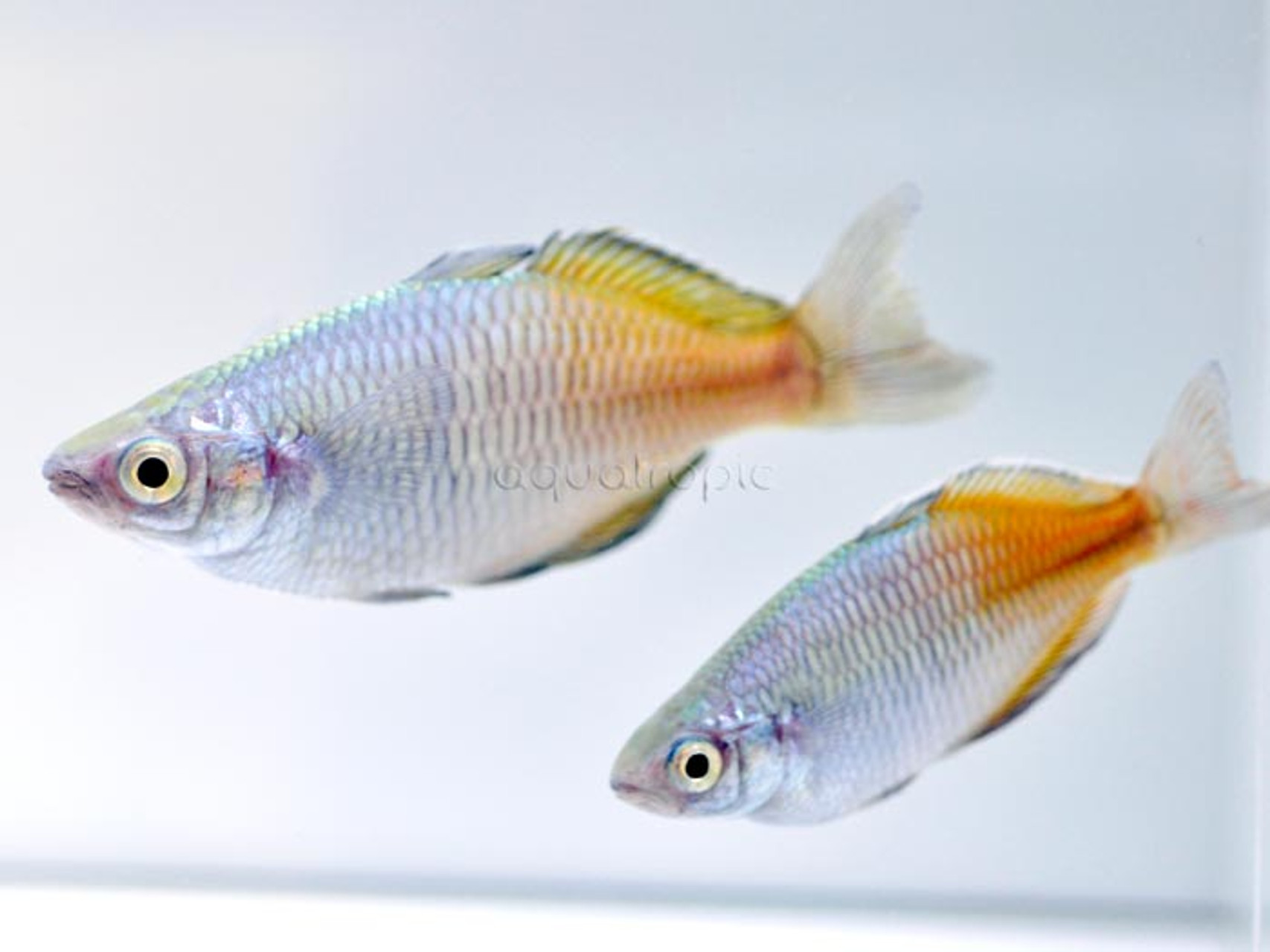The Boesemani Rainbowfish (Melanotaenia boesemani)

Buried deep within the dense tropical rainforests that fill the Bird’s Head Peninsula of New Guinea swims a blue and gold treasure—the Boesemani Rainbowfish. The crystal clear mountain lakes that this fish calls home are some of the most remote freshwater habitats in the world, but, in 1982, famed ichthyologist Dr. Gerry Allen and renowned aquarium collector Heiko Bleher ventured to this far-flung region in an effort to bring back live specimens of the many unique fishes found here. Thankfully, their efforts succeeded and now, despite being quite rare in the wild,
Melanotaenia boesemani has become one of the most abundant and popular species of rainbowfish in the aquarium trade. When it was first popularized, the locals of Lake Ayamaru heavily exploited this fish’s small population, which, along with the introduction of invasive fishes and habitat destruction, greatly reduced this species’ numbers in the wild. This was undeniably a sad outcome for what had previously been a pristine habitat and has led to this fish being categorized as endangered by the IUCN, but, thanks to the ease with which M. boesemani can be bred, all of the individuals now available to aquarists originate from commercial fish breeders. Not only does does this eliminate the stress on this fish’s small population in the wild, but it has also dramatically lowered its cost, making this rare fish something anyone can afford to add to their aquarium.
The lake system that the Boesemani Rainbowfish calls home is situated at an elevation of 250 meters in a kartic geologic formation that gives these waters a relatively high pH (ranging anywhere from 7 to 9 depending on the season and locality) and which makes this fish quite at home in an alkaline aquarium, such as an African Rift Lake-themed tank. However, there are also portions of its range where the pH can be mildly acidic, illustrating just how adaptable this fish can be, both in nature and in captivity. Temperatures in these lakes are warm, ranging from the mid-70s to the lower 80s fahrenheit.
As with other rainbowfishes, this is a shoaling species that should be kept in groups of a half-dozen or more, with a mix of males and females. The two sexes can be told apart based on color and body shape. Males are the more colorful sex, being bright goldenyellow on the front half and blue towards the rear, while females are more muted, with a black stripe along the side. Mature males also develop a taller body shape and more exaggerated fins.
A densely planted tank will accurately replicate the natural habitat of M. boesemani, though this undemanding species will do well in almost any aquarium. Being a fast and active swimmer, there are many good options for tankmates, from aggressive African cichlids to more peaceful tetras, barbs and gouramis, but, as they reach an adult size near 5 inches, be sure to provide a tank measuring at least 55 gallons or more so that this fish can stretch its fins properly. When well-fed and cared for, this brilliant and beautiful fish can be jaw-droppingly gorgeous in a home aquarium.